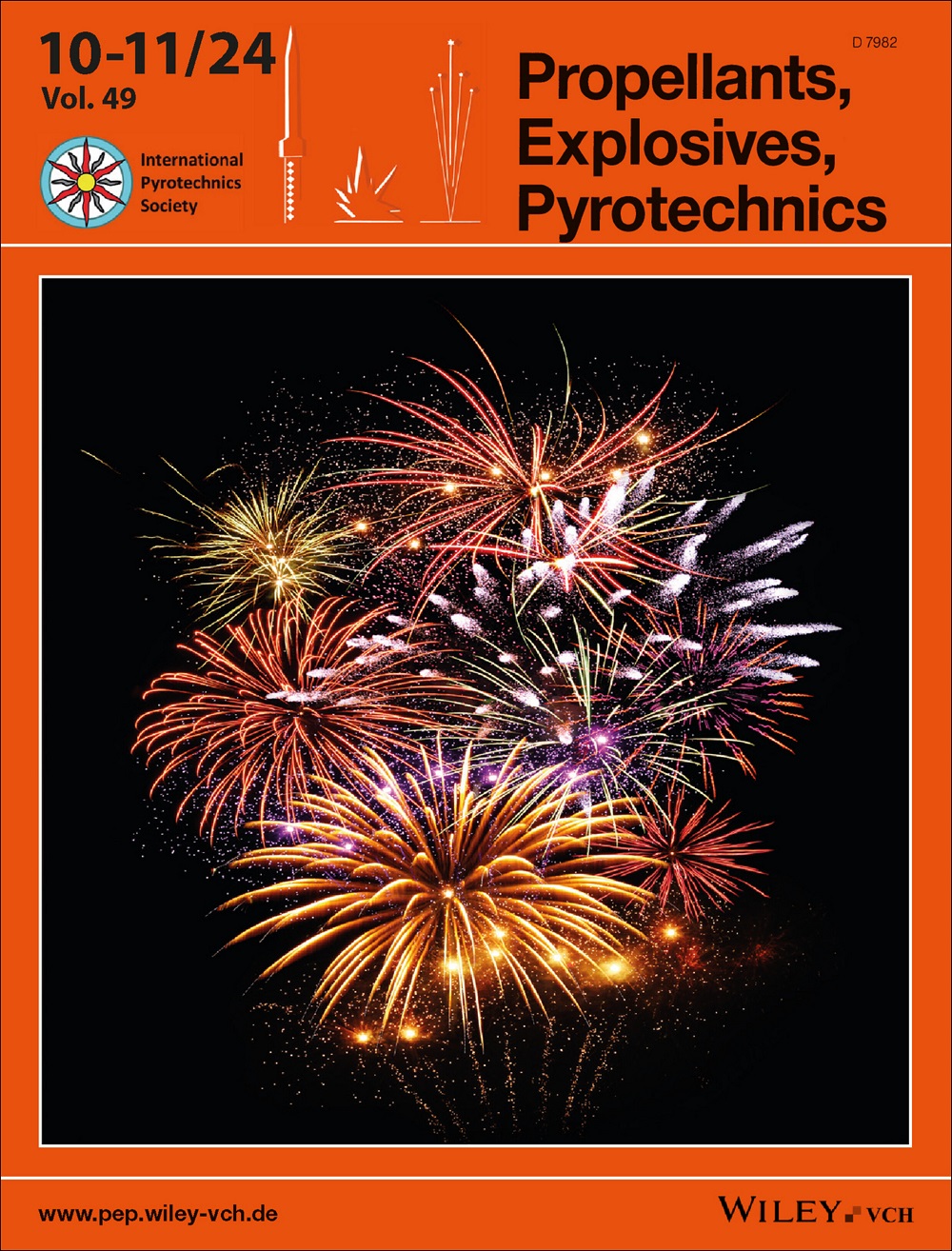关于高爆炸产品的琼斯-威尔金斯-李状态方程
IF 2
4区 工程技术
Q3 CHEMISTRY, APPLIED
引用次数: 0
摘要
琼斯-威尔金斯-李(JWL)模型是文献中广泛使用的状态方程(EOS),用于模拟高爆炸性产品。它基于压力-体积图中的指数衰减等压线,并通过一个附加项来恢复大膨胀时的理想气体行为,在这种情况下指数项可以忽略不计。建议对 EOS 进行逐步分析。从主等压线、常数格吕尼森和常数等时热容开始,推导出压力、温度、声速、比内能、比熵和比焓的 JWL 表达式。针对一组特定的 JWL 参数(用于模拟 HMX 产品),研究了压力-体积和温度-体积平面上的各种热力学场。研究了压力和温度的正向性、凸性、热力学稳定性以及沿着休格诺的单调性,以确定 JWL 有效域的特征。对于每一种约束条件,都发现了不同的有效区域。除了介绍对 JWL 模型及其限制的研究之外,这项工作还提供了独立的介绍和推导,其中包含必要的材料,用于理解 JWL EOS 并将其用于凝聚态炸药的反应流体力学模拟。本文章由计算机程序翻译,如有差异,请以英文原文为准。
On the Jones‐Wilkins‐Lee equation of state for high explosive products
The Jones‐Wilkins‐Lee (JWL) model is a widely used Equation Of State (EOS) in the literature to model high explosive products. It is based on exponentially decaying isentropes in the pressure‐volume diagram, completed by an additional term meant to recover an ideal‐gas behavior for large expansions where exponential terms are negligible. A step‐by‐step analysis of the EOS is proposed. Starting from the main isentrope, the constant Grüneisen, and constant isochoric heat capacity, the JWL expressions of pressure, temperature, sound speed, specific internal energy, specific entropy and specific enthalpy are derived. For a specific set of JWL parameters meant to model HMX products, various thermodynamic fields are investigated in pressure–volume and temperature–volume planes. The positivity of pressure and temperature, the convexity, the thermodynamic stability, and the monotonicity along an Hugoniot are investigated in order to characterize the JWL domain of validity. For each of these constraints, different regions of validity are found. Besides presenting a study of the JWL model and its limits, this work also provides a standalone presentation and derivation containing the necessary materials for the understanding and for the use of the JWL EOS in reactive hydrodynamic simulations of condensed phase explosives.
求助全文
通过发布文献求助,成功后即可免费获取论文全文。
去求助
来源期刊

Propellants, Explosives, Pyrotechnics
工程技术-工程:化工
CiteScore
4.20
自引率
16.70%
发文量
235
审稿时长
2.7 months
期刊介绍:
Propellants, Explosives, Pyrotechnics (PEP) is an international, peer-reviewed journal containing Full Papers, Short Communications, critical Reviews, as well as details of forthcoming meetings and book reviews concerned with the research, development and production in relation to propellants, explosives, and pyrotechnics for all applications. Being the official journal of the International Pyrotechnics Society, PEP is a vital medium and the state-of-the-art forum for the exchange of science and technology in energetic materials. PEP is published 12 times a year.
PEP is devoted to advancing the science, technology and engineering elements in the storage and manipulation of chemical energy, specifically in propellants, explosives and pyrotechnics. Articles should provide scientific context, articulate impact, and be generally applicable to the energetic materials and wider scientific community. PEP is not a defense journal and does not feature the weaponization of materials and related systems or include information that would aid in the development or utilization of improvised explosive systems, e.g., synthesis routes to terrorist explosives.
 求助内容:
求助内容: 应助结果提醒方式:
应助结果提醒方式:


